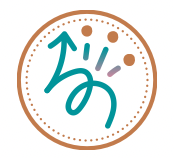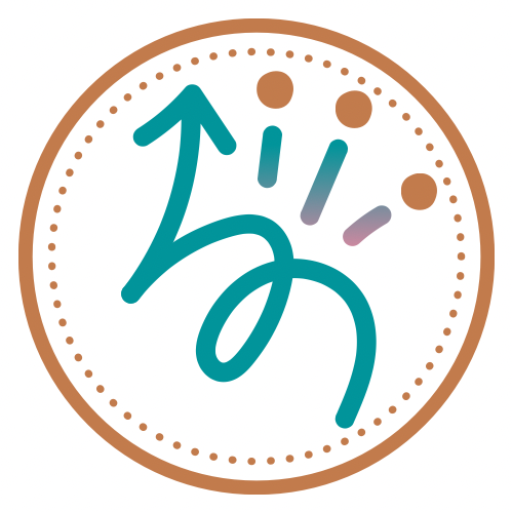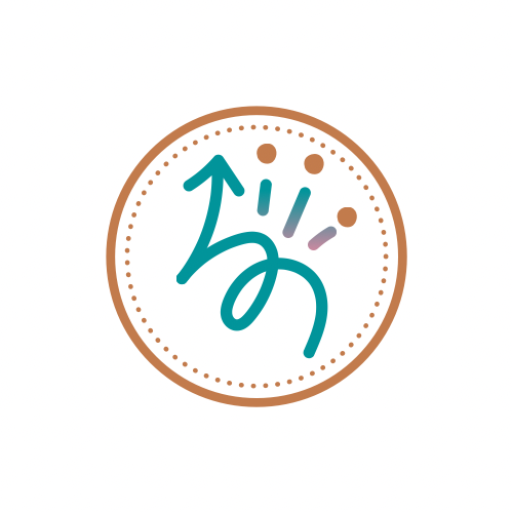Weighted Pencil: A Handwriting Support Aid
Today’s project is all about how to make your own weighted pencil. There are lots of ways to make a weighted pencil, but this version I feel has the best comfort and feel, weight distribution, and ergonomic positioning of the pencil when in use. This resource also discusses the benefits of using a weighted pencil, recommendations for use, and who might benefit from the use of a weighted pencil.

This content is not intended as a substitute for medical advice, diagnosis, or treatment. Always seek the advice of your physician, therapist, or other medical professional regarding a medical condition or treatment. This content is for informational purposes only. See full disclosure here.
All links in this post are non-affiliate links, and are provided for your convenience.
What Is A Weighted Pencil?
A weighted pencil is a pencil that is heavier than a typical pencil (1.5 ounces to 4.3 ounces), and is used as a therapeutic tool in occupational therapy. This type of weighted device is often recommended by occupational therapists as a handwriting aid. This handwriting support aid helps children and adults reduce hand tremors, provide additional sensory feedback, stabilize uncontrolled movements, allows for smooth and more legible writing, and more control of the handwriting tool while writing. Let’s dive in a little deeper into some of these benefits before creating this simple, yet effective handwriting support aid.
Who Might Benefit From Using A Weighted Pencil?
I have often heard as a pediatric occupational therapist, “my pencil lead always breaks,” or “ my arm hurts while I write”. Both of these are signs that may indicate that a weighted pencil may be a good fit.
Here are some additional indicators that someone might benefit from a weighted pencil:
- Experiences hand tremors including those associated with ataxia, early Parkinson’s disease, multiple sclerosis, stroke, or traumatic brain injury as well as tremors associated with medications
- Shaking the hand out while writing due to fatigue and/or hand or arm pain
- Massaging the hand or arm during writing tasks
- Breaks the lead often
- Displays a tight grasp on the pencil
- Writes too hard or too light, too much pressure or force on the pencil
- Differences in body awareness resulting into a tight grip, pencil pressure differences, and/or maintain a less functional grasp on the pencil.
- Differences in hand and finger strength
Contact your personal occupational therapist to discuss whether a weighted pencil is a good fit for you.
The Weighted Pencil + Reducing Hand Tremors
The additional weight of a weighted pen or pencil can help to stabilize the hand for those with hand tremors. The weight helps to bring awareness to the hand and fingers helping to decrease hand tremors. This, in turn, can help the user to press more firmly into the pencil providing the feedback needed to write with a more steady hand.
The Weighted Pencil + Better Fine Motor Control
The use of a weighted pencil can benefit both children and adults by providing additional sensory feedback to the hands and fingers for better fine motor control. Additional sensory feedback may be needed for individuals who maintain a tight pencil grasp, or if the pencil pressure is either too much or too little.
The additional proprioceptive input, input received through the muscles and joints of the hand from the weighted device, provides the user with additional body awareness to the hands and fingers. This allows for a more functional pencil grasp and improved pencil pressure as well as fine motor control.
Additional sensory feedback can also assist those who have differences in muscle tone (ie: hand weakness). The weighted device helps to maintain the correct pencil grasp, build strength while writing, and improve the pressure on the pencil. When introducing a weighted pencil, especially for someone who has differences in hand strength, it’s important to use the weighted pen or pencil for short amounts of time. By doing this, it will help to build hand strength while avoiding fatiguing the hand and finger muscles.
Check with your personal occupational therapist to find out if this handwriting device is a good fit for you.




How To Use A Weighted Pencil
When making, or purchasing, a weighted pencil consider the individual’s age, fine motor abilities, hand size, hand and finger strength, as well as the position of the weight on the pencil. Consider the following before making a weighted pencil.
* The DIY weighted pencil if not intended for children under the age of 3 years or for those who chew on non-food items as it is a potential choking hazard.
What Weights Should I Add To The Pencil?
Depending on the hand size, age, and fine motor skills and strength of the user, you can either use individual hex nuts sandwiched together, or use a coupling nut. If you are working with younger children, based on their hand size and strength you may need to use individual nuts rather than a coupling nut so that less weight is added to the pencil. The number added nuts is based entirely on their case. Contact your personal occupational therapist who can recommend the appropriate weight for the weighted pencil user.
Can Additional Weights Be Added?
Yes, additional weights can be added as recommended by your occupational therapist. If too much weight is added, it can tire out the hand easily causing too much stress and strain on the hand, fingers, muscles, and joints. It is important to discuss your case with your personal occupational therapist to discuss your case.
Add additional weight by adding either individual hex nuts on top of the coupling nut so that it is closer to the eraser, or add an additional coupling nut.
If you are adding a second coupling nut, position the second coupling nut where the finger tips will be positioned. This will create a built up pencil gripping surface. I do not recommend adding two coupling nuts so that both are positioned on the upper half of the pencil, above the webspace. See the section below under Weight Placement.
Weight Placement
As seen in the picture above, position the weighted portion so that it rests in the webspace (the space between the thumb and index where the pencil rests). The weights should not be positioned so low that it interferes with finger placement. Alternatively, the weight should not be too high either where it is positioned above the hand.
As seen often with the weighted pencil products on Amazon, a majority of the weights are positioned too high, above the webspace close to the eraser. When the weight is too high, it not only pulls the pencil back beyond the webspace, but it also adds additional upwards pressure to the fingers. This position can make the fingers tire more easily when forming letters, make the pencil slip out of the user’s grasp, and cause additional strain on the hand. Therefore, make sure the pencil weight is positioned correctly resting in the webspace as seen in the picture.
What Material Should I Use For Added Comfort Over The Weight(s)?
For added comfort and feel, I recommend wrapping the weights of the pencil with crafting sticky back foam sheets as Therapy Fun Zone did in their tutorial. This is an inexpensive product found at your local crafting store or online. I highly recommend this product for the best comfort and feel. Alternatively, you can also use a self adhesive bandage material such as Vetrap, SyrFlex, or Coban if you already have that on hand. Vetrap or Syrflex can be found at your local pet supply store, Tractor Supply, as well as online. While Coban can be found at a medical supply store or online.
For those with sensory sensitivities such as tactile defensiveness, the self adhesive bandage may cause adverse reactions to the feel of the bandage. Use the crafting sticky back foam sheets for those with tactile sensitivities.
If you already have a self adhesive bandage at home, you can use it, otherwise purchasing sticky back foam sheets is the more inexpensive product and provides additional comfort. I used the Silly Winks brand which I found at Hobby Lobby.
Do you absolutely have to add a covering to the weights? No, this is optional, but highly recommended for best comfort and feel.
Duration Of Use
As you can imagine, using a weighted pencil can fatigue the hand and fingers; therefore, it is important to limit the active use in the beginning to 15-20 minutes or less per day. Consult your occupational therapist to discuss your case and recommendations for use. Active use time can build overtime as hand and finger strength is gained through its use and fine motor strengthening exercises (see the sections below). Discuss with your personal occupational therapist regarding use time at home, school, and/or work.
Can A Pencil Grip Be Added?
Yes, most finger placement pencil grips can be added to the weighted pencil as long as they do not interfere with the correct position of the weight.
Can I Sharpen The Pencil?
Yes, you can sharpen the pencil by moving the rubber washers and coupling nut or individual nuts up towards the eraser. Do this individually, if needed, by first moving the rubber washers, then the metal nuts, followed by the other rubber washer. This is also a great fine motor strengthening task. Before sending weighted pencil to school, make sure your child can move the washers and nut(s) up the pencil so that it can be sharpened. Furthermore, make sure the child knows where the correct position of the weight should be after sharpening.
Can I Add These Weights To A Paint Brush As Well?
Yes! These weights are a great addition to a paint brush. Position the weights just like a pencil within the webspace. I realize some artists have a unique way of holding a paint brush, in those cases, position the weights so that your paint brush feels balanced and does not cause any additional strain on any part of your hand or fingers.
Proprioceptive Exercises For Handwriting
Proprioceptive exercises, those that provide input to the hands and fingers, as well as strengthening exercises may be beneficial for those who use a weighted pencil. These exercises should be done prior to handwriting tasks such as in the classroom before a new writing task, before doing homework, or prior to handwriting tasks during therapy sessions. These proprioceptive exercises not only provide additional sensory feedback to the hands, but also are a great hand and upper body strengthening exercises as well. Based on your needs and those recommended by your occupational therapist, pick and choose which exercises are best for your situation.
Exercises For Home
It’s important for those with differences in hand and finger strength to also participate in building upper body and core strength along with building fine motor strength as well. Here are several resources I created that include exercises for home:
Here are some proprioceptive exercises that you can do quickly while sitting at your desk such as during the school or work day. These are great warm up exercises to get your hands “ready” before participating in a handwriting task.
- In prayer position with the hands together and elbows elevated, press hands together and hold. Repeat.
- Participate in chair push ups while seated in a chair. With your arms by your side, and your palms positioned on the side of the chair next to your hips and fingers hanging off, lift your body off the seat of your chair, hold, lower, and repeat.
- Do side to side hand grasps by clasping hands together then switch positioning. Squeeze the hands together after each position change.
- Wiggle fingers quickly going from fingers extended to flexing repeatedly, keeping finger muscles active throughout the exercise.
- Touch each finger to your thumb. Make sure to press the thumb and finger together with added strength each time. Switch hands.
- With fingers extended and palms together, rub the palms of the hands together with added pressure sliding your hands up and down causing friction between the hands.




How To Make A Weighted Pencil
Materials
- Pencil or plain ball point pen
- 1- Coupling nut ⅜- 3/16 or alternatively several of the same size hex nuts
- Rubber washers, grommet, or 0-ring size ¼ x ½ x 1/16 or even rubber bands
- Sticky back craft foam (found at your local craft store) or alternatively Coban by 3M or a vet wrap such as PetFlex or StrFlex (see note above regarding using a self adhesive bandage instead)
- Scissors
- Superglue
Instructions
- Measure the approximate size of the sticky back craft foam you will need using the coupling nut or individual nuts. Cut out the foam a little longer than you need, then you can adjust the size later. Place to the side.
- On the pencil, add a rubber washer, then coupling nut or individual nuts, and lastly add another rubber washer to hold in place. Adjust the weight and rubber washers so that it rests in the user’s webspace as seen in the photo above.
- Last, wrap the coupling nut or individual nuts (try to get the hexagon edges to line up) with the sticky back foam sheet by removing the paper backing. Place over the nuts, aligning the edges.
- If needed, add a small strip of super glue to one or both ends of the sticky back foam at the seam if it starts to pull up, or if the user of the weighted pencil picks at the foam. Let dry.
Resources
- Looking for other ways to add weight to a pen or pencil, or even other types of adaptive writing aids? Check out Adapt2Equip’s adaptive writing aids which includes other ideas for how to add weight to a writing utensil as well as built up and non-slip gripping surfaces.
- This project has been adapted from Therapy Fun Zone. Check out Therapy Fun Zone’s site as it has lots of great occupational therapy DIY projects as well OT products for kids.










